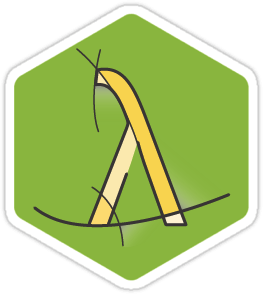node-lambda
Command line tool to locally run and deploy your node.js application to Amazon Lambda.
node-lambda run
Installation
npm install -g node-lambda
Example App
The node-lambda-template example app makes it easy to get up and running.
Usage
There are 4 available commands.
node-lambda setup
node-lambda run
node-lambda package
node-lambda deploy
Commands
setup
Initializes the event.json, context.json, .env files, and deploy.env files. event.json is where you mock your event. context.json is where you can add additional mock data to the context passed to your lambda function. .env is where you place your deployment configuration. deploy.env has the same format as .env, but is used for holding any environment/config variables that you need to be deployed with your code to Lambda but you don't want in version control (e.g. DB connection info).
$ node-lambda setup --help
Usage: run [options]
Options:
-h, --help output usage information
After running setup, it's a good idea to gitignore the generated event.json and .env files.
echo -e ".env\ndeploy.env\nevent.json" >> .gitignore
run
Runs your Amazon Lambda index.js file locally. Passes event.json data to the Amazon Lambda event object.
$ node-lambda run --help
Usage: run [options]
Options:
-h, --help Output usage information
--handler [index.handler] Lambda Handler {index.handler}
-j, --eventFile [event.json] Event JSON File
-f, --configFile [] Path to file holding secret environment variables (e.g. "deploy.env")
-u, --runtime [nodejs4.3] Lambda Runtime {nodejs4.3, nodejs} - "nodejs4.3" is the current standard, "nodejs" is v0.10.36
-x, --contextFile [context.json] Context JSON file
package
Bundles your application into a local zip file.
$ node-lambda package --help
Usage: package [options]
Options:
-h, --help output usage information
-p, --packageDirectory [build] Local Package Directory
-n, --functionName [node-lambda] Lambda FunctionName
-e, --environment [staging] Choose environment {development, staging, production}
-f, --configFile [] Path to file holding secret environment variables (e.g. "deploy.env")
-x, --excludeGlobs [] Add a space separated list of file(type)s to ignore (e.g. "*.json .env")
-P, --prebuiltDirectory [] Prebuilt directory
deploy
Bundles and deploys your application up to Amazon Lambda.
$ node-lambda deploy --help
Usage: deploy [options]
Options:
-h, --help output usage information
-e, --environment [staging] Choose environment {development, staging, production}
-a, --accessKey [your_key] AWS Access Key
-s, --secretKey [your_secret] AWS Secret Key
-k, --sessionToken [your_token] AWS Session Token
-r, --region [us-east-1] AWS Region(s)
-n, --functionName [node-lambda] Lambda FunctionName
--handler [index.handler] Lambda Handler {index.handler}
-o, --role [your_role] Amazon Role ARN
-m, --memorySize [128] Lambda Memory Size
-t, --timeout [3] Lambda Timeout
-d, --description [missing] Lambda Description
-u, --runtime [nodejs4.3] Lambda Runtime {nodejs4.3, nodejs} - "nodejs4.3" is the current standard, "nodejs" is v0.10.36
-p, --publish [false] This boolean parameter can be used to request AWS Lambda to create the Lambda function and publish a version as an atomic operation
-v, --version [custom-version] Lambda Version
-f, --configFile [] Path to file holding secret environment variables (e.g. "deploy.env")
-b, --vpcSubnets [] VPC Subnet ID(s, comma separated list) for your Lambda Function, when using this, the below param is also required
-g, --vpcSecurityGroups [] VPC Security Group ID(s, comma separated list) for your Lambda Function, when using this, the above param is also required
-x, --excludeGlobs [] Add a space separated list of file(type)s to ignore (e.g. "*.json .env")
-P, --prebuiltDirectory [] Prebuilt directory
Custom Environment Variables
AWS Lambda doesn't let you set environment variables for your function, but in many cases you will need to configure your function with secure values that you don't want to check into version control, for example a DB connection string or encryption key. Use the sample deploy.env file in combination with the --configFile flag to set values which will be prepended to your compiled Lambda function as process.env environment variables before it gets uploaded to S3.
Node.js Runtime Configuration
AWS Lambda now supports Node.js v4.3.2, and there have been some API changes for the new version. Most notably,
context.done(), context.succeed(), and context.fail() are deprecated in favor of the Node convention of passing in
a callback function. These will still work for now for backward compatibility, but are no longer recommended.
v0.10.36 is still supported, and can be targeted by changing the AWS_RUNTIME value to nodejs in the .env file.
Post install script
When running node-lambda deploy if you need to do some action after npm install --production and before deploying to AWS Lambda (i.e. replace some modules with precompiled ones or download some libraries) you can create post_install.sh script. If the file exists the script will be executed (and output shown after execution) if not it is skipped. Make sure that the script is executable.
Prebuilt packages
The --prebuiltDirectory flag is useful for working with Webpack for example. It skips npm install --production and post_install.sh and simply packages the specified directory.
Handling npm link and Dependencies With Local Paths
Perhaps the easiest way to handle these cases is to bundle the code using Webpack and use the --prebuiltDirectory flag to package the output for deployment.
Other AWS Lambda Tools Projects
Contributing
- Fork it
- Create your feature branch (
git checkout -b my-new-feature) - Commit your changes (
git commit -am 'Added some feature') - Push to the branch (
git push origin my-new-feature) - Create new Pull Request
Running tests
npm install
npm test


